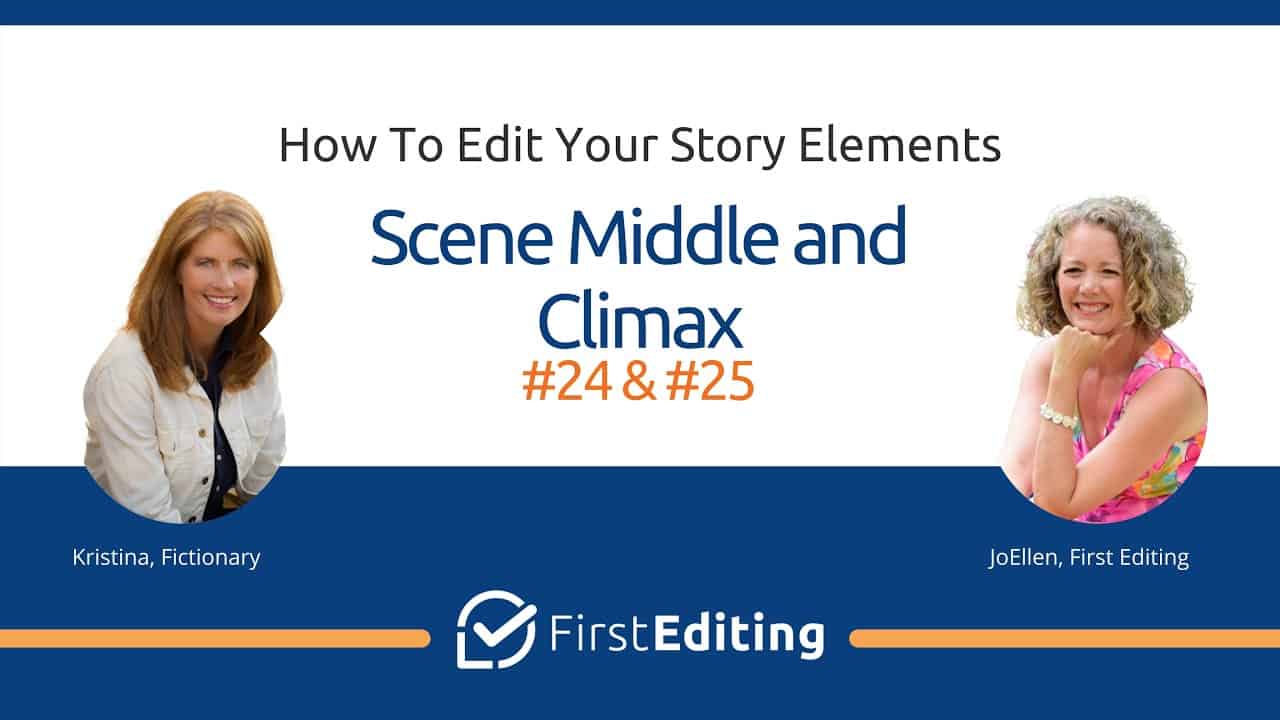Kristina Stanley from Fictionary joins JoEllen Nordstrom to talk about the importance of the middle and climax of a scene.
Learn how your scene’s middle and climax work together and how using them effectively can help you improve your writing right now.
Middle and climax
Every scene in your story has a beginning, middle, and end, and you, as the author, need to be in control of that as you work your way through your revisions.
The scene middle works just like the midpoint of your book: something happens that pushes the scene forward in a way that makes the reader want to continue reading. We talked about the scene “name,” which is what the scene is about in three words or less.
Now try to do the same with the scene’s middle, describing the key action or event at the center of the scene.
The climax is not only “what happened at the end,” but also the scene’s most exciting or important part. By looking at the beginning, middle, and climax together, you can see the overall scene structure and how the scene fits into the rest of your story. If you look at the scene middle and think, It’s very exciting, but it has nothing to do with my story, you know you have a problem, and the same is true of the climax. They both need to be related to your plot, which is part of the reason that we put them in the scene in the first place.
Plot holes
It’s important to look for plot holes or inconsistencies in the story, and examining your scene middles and climaxes is a great way to do that. You also want to avoid ending your scenes the same way every time, and giving your scene climaxes a hard look is a good way to do that. Readers are smart and remember a lot.
The same goes for repetitive action in your scene middles. If you’re writing a book about a runner, and the scene middle is always about how hard it is to finish the run, readers will soon spot the repetition. You might be able to get away with doing it twice, but after that, the reader thinks, I know this guy has a hard time finishing his runs. I don’t want to read about it again.
Keep a sharp eye out for repetition of both style and story information. Discovering that you’ve written something the same way twice gets your imagination going so you can try something new and write a better scene. Variety. It always comes back to variety.
This type of editing, “reviewing,” is really what makes the book stand out, and it’s something you learn during certification for StoryCoach Editing. It’s very important to be fresh in every single scene and cover every single element. I know we often go back to that analogy of a pilot going down a checklist, but that’s the only way to get us safely from one point to the other in our story.
Again, you have to go back and look at your scenes. Look at your scene middles and then check out the climaxes to make sure they are all different. You need to make a list of everything in your book and then analyze it. There’s no way around this.
Most importantly, keep up your energy and your optimism because you can do this. Just keep editing, and you’re going to have a fantastic story in the end.
If you enjoyed this chapter, please share it with your friends and let us know what you learned from it.
WATCH NEXT EPISODE: Action and Sequel Scenes – EPISODE #26
WATCH PREVIOUS EPISODE: Flashbacks – EPISODE #23
RETURN TO THE 38 STORY ELEMENTS
















